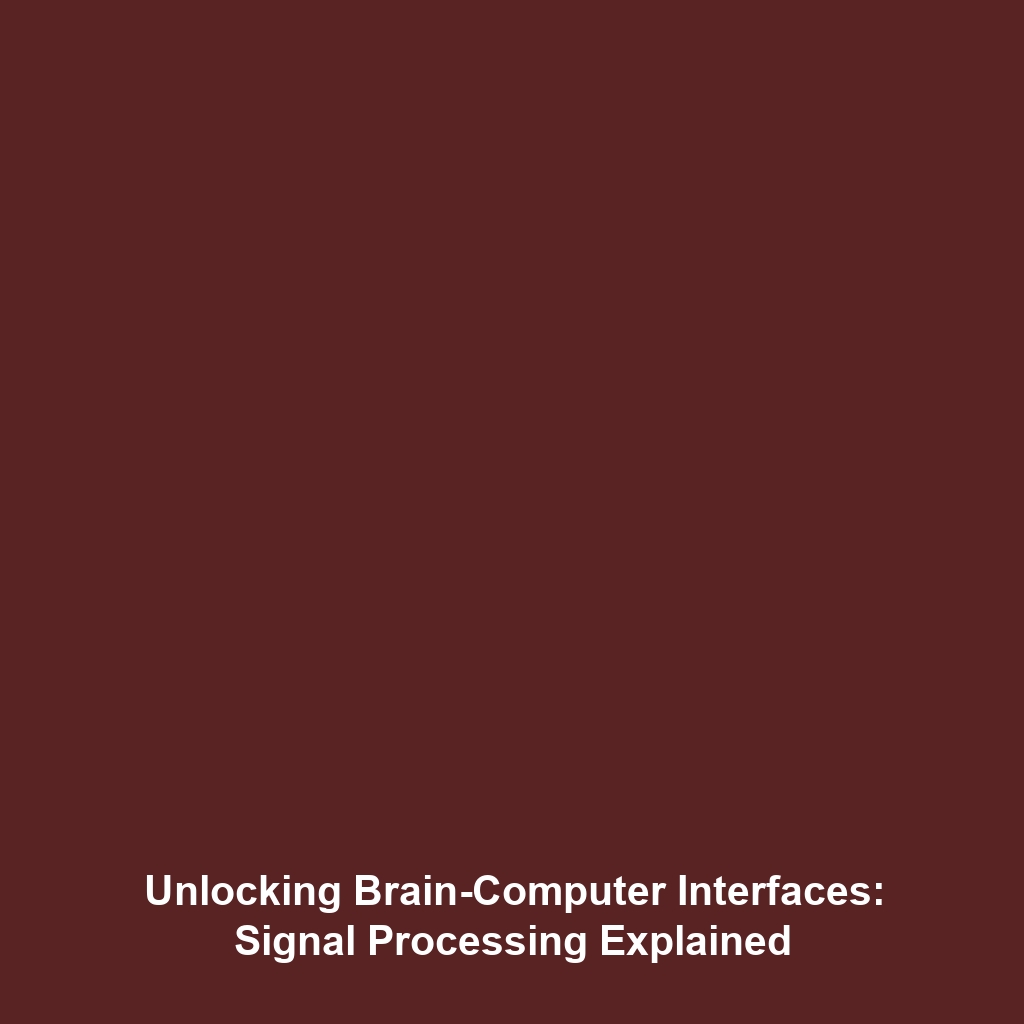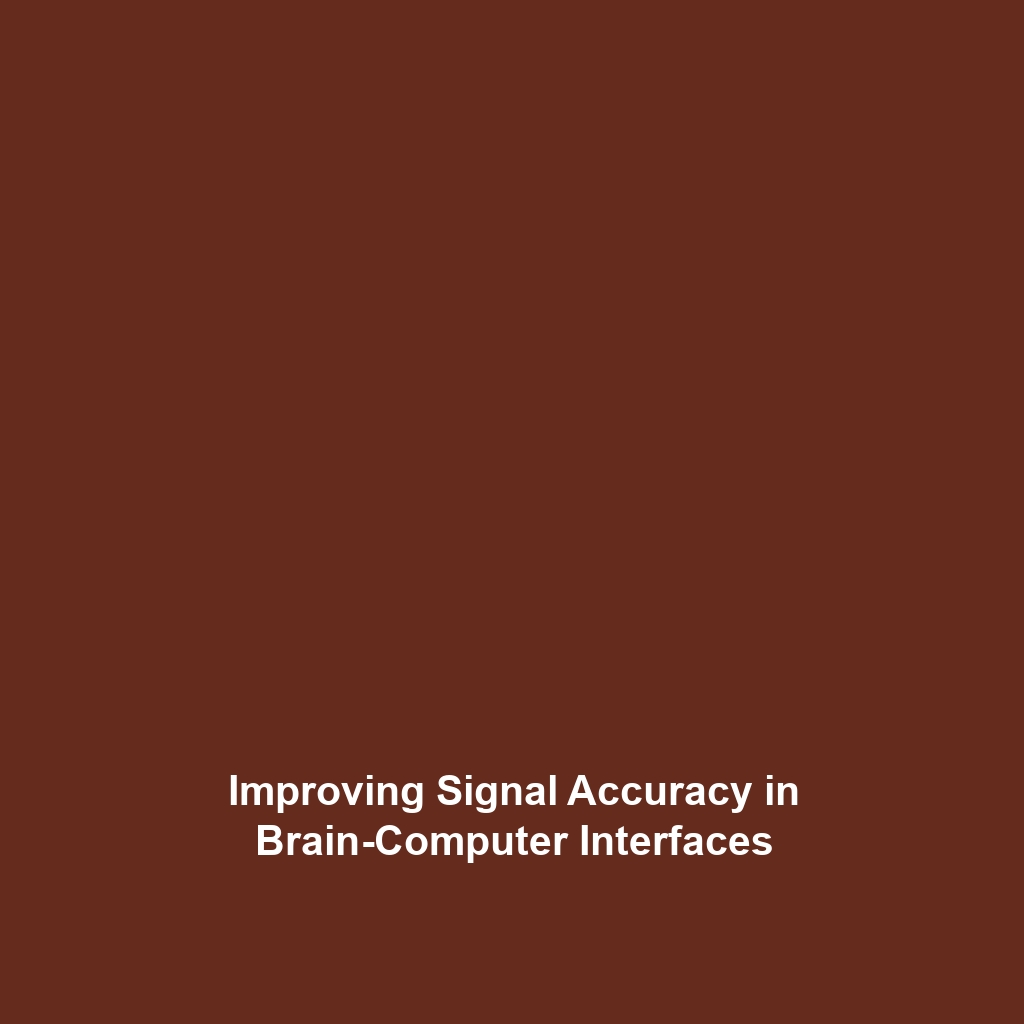Signal Processing in Brain-Computer Interfaces
Introduction
Signal processing plays a pivotal role in Brain-Computer Interfaces (BCIs) by translating neural signals into commands that can be understood by computers or machines. This transformative technology leverages advanced algorithms to interpret patterns of neural activity, enabling direct communication between the brain and external devices. The capacity to decode these signals opens new frontiers in assistive technology, rehabilitation, and human-computer interaction, making the study of signal processing vital for advancing BCI applications and enhancing the quality of life for individuals with disabilities.
Key Concepts
Understanding signal processing within the context of BCIs involves several key concepts:
- Neural Signal Acquisition: The initial phase involves capturing brain activity through electroencephalogram (EEG), functional magnetic resonance imaging (fMRI), or other neuroimaging techniques.
- Signal Processing Algorithms: These algorithms analyze the captured signals, extracting relevant features and patterns indicative of specific thoughts or intentions.
- Command Translation: The processed signals are converted into actionable commands that guide external devices, such as robotic arms or communication tools.
These principles emphasize the intricate relationship between signal processing and BCIs, highlighting how technological advancements can improve the accuracy and efficiency of translating neural commands.
Applications and Real-World Uses
Signal processing is integral to numerous real-world applications of Brain-Computer Interfaces, including:
- Assistive Technology: BCIs enable individuals with motor impairments to control devices, such as computer cursors or wheelchairs, using only their thoughts.
- Rehabilitation: Innovations in signal processing facilitate therapies for stroke survivors through interactive brain-controlled devices that promote recovery.
- Communication Aids: For people unable to speak, BCIs can help translate cognitive signals into speech output, significantly enhancing their ability to communicate.
These examples illustrate how signal processing is utilized in enhancing human capabilities and improving quality of life through BCIs.
Current Challenges
Despite the breakthroughs in signal processing and BCIs, several challenges remain:
- Signal Noise: Extraneous signals can interfere with the accuracy of neural signal interpretation.
- Algorithm Limitations: Existing algorithms may struggle with variability in individual brain signals, leading to misinterpretation.
- Ethical Considerations: The potential for misuse of BCI technology raises concerns about privacy and consent, necessitating clear guidelines.
Addressing these challenges is crucial for the responsible development and implementation of signal processing in BCIs.
Future Research and Innovations
The future of signal processing within Brain-Computer Interfaces looks promising, with several exciting innovations on the horizon:
- Enhanced Algorithms: Research is ongoing to develop more robust algorithms capable of accurately decoding complex neural patterns.
- Integrated Technologies: Future BCIs may combine with advanced wearables, offering real-time feedback and a seamless user experience.
- Neuroprosthetic Developments: Innovations are expected to improve the functionality and integration of neuroprosthetics with natural movement.
These advancements have the potential to revolutionize how individuals interact with technology and enhance BCI usability for various applications.
Conclusion
In conclusion, signal processing stands as a foundational component of Brain-Computer Interfaces, enabling the translation of neural signals into meaningful commands. Its significance is underscored by the diverse applications that enhance mobility, communication, and rehabilitation for individuals with disabilities. As research progresses and new innovations emerge, the future of signal processing in BCIs promises continued improvements in technology, usability, and accessibility. For further information on related topics, consider exploring our articles on rehabilitation technology and neuroprosthetics innovations.


